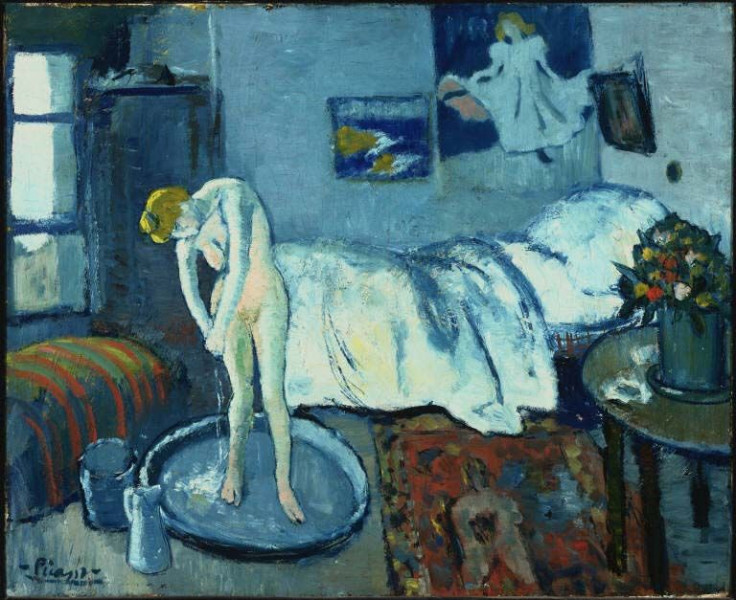
Despite being produced in 1901, “The Blue Room,” a well-known painting created by world famous artist Pablo Picasso, still possesses some surprises for modern day art historians. “The Blue Room” is a notable Picasso masterpiece, associated with the Spanish painter’s Blue Period, stretching from 1901 until 1904, Picasso’s notably Blue Period, which was subsequently followed by his Rose Period, was characterized by somber and even depressing pieces painted in monochromatic shades of blue, sometimes highlighted with blue green tones, that produced an eerie glow.
The work produced at this time normally featured gaunt mothers, underfed children and particular sickly looking individuals. Although now art historians and experts have something to investigate, a recent discovery through the use of infrared technology has revealed the existence of another subject in the painting. Hidden from the human eye, beneath Picasso’s “The Blue Room” painting art experts discovered another painting featuring a bow-tied man with his face resting on his hand, with three rings on his fingers.
After the initial excitement over the discovery of the mysterious man, now art experts and historians are attempting to uncover the history behind this portrait. Who is this man and how did he find himself underneath Picasso’s “The Blue Room?” According to the Associated Press, experts at The Phillips Collection in Washington are hoping to answer that question simply.
"It's really one of those moments that really makes what you do special," said Patricia Favero, the conservator at The Phillips Collection who pieced together the best infrared image yet of the man's face. "The second reaction was, 'well, who is it?' We're still working on answering that question."
Art experts have long suspected a mystery under the surface of “The Blue Room,” which has been part of The Phillips Collection in Washington since 1927. In 1954, an art conservator noted that the piece featured non-matching brushstrokes; the brushstrokes were referred to as “odd.” However it wasn’t until a technological advance in the 1990’s that conservators and historians were able to put this brushstroke theory to the test. According to AP, an x-ray of “The Blue Room” in the 1990’s revealed an incomplete or “fuzzy” image of something else beneath the well-known portrait of a woman bathing, although it wasn’t until 2008 that the man’s face was first seen.
In 2008, improved infrared imagery revealed for the first time a man's bearded face resting on his hand with three rings on his fingers. The still mysterious man is dressed in a jacket and a bow tie, following the infrared imagery; a continued technical analysis concluded that the man’s portrait was most likely painted just before "The Blue Room." The discovery in 2008 was really only a springboard, with experts from The Phillips Collection, National Gallery of Art, Cornell University and Delaware's Winterthur Museum, working for the last five years to construct a clear image of the man. The findings were only revealed to the Associated Press last week, although there is still more work to do.
"When he had an idea, you know, he just had to get it down and realize it," curator Susan Behrends Frank told the AP, revealing Picasso had hurriedly painted over another complete picture. "He could not afford to acquire new canvasses every time he had an idea that he wanted to pursue. He worked sometimes on cardboard because canvass was so much more expensive."
The next step is to know discover the identity of the man. According to the AP, the portrait may be that of Ambrose Villard, a Paris art dealer who hosted Pablo Picasso’s first art exhibit in 1901. However with little evidence on the canvas, the search for his identity and history of the portrait continues. Dorothy Kosinski, the director of The Phillips Collection, revealed that through advancing technology, experts and n turn audiences can learn more about Picasso’s work, process and subjects.
"Our audiences are hungry for this. It's kind of detective work. It's giving them a doorway of access that I think enriches, maybe adds mystery, while allowing them to be part of a piecing together of a puzzle," she said. "The more we can understand, the greater our appreciation is of its significance in Picasso's life."
© 2025 Latin Times. All rights reserved. Do not reproduce without permission.







